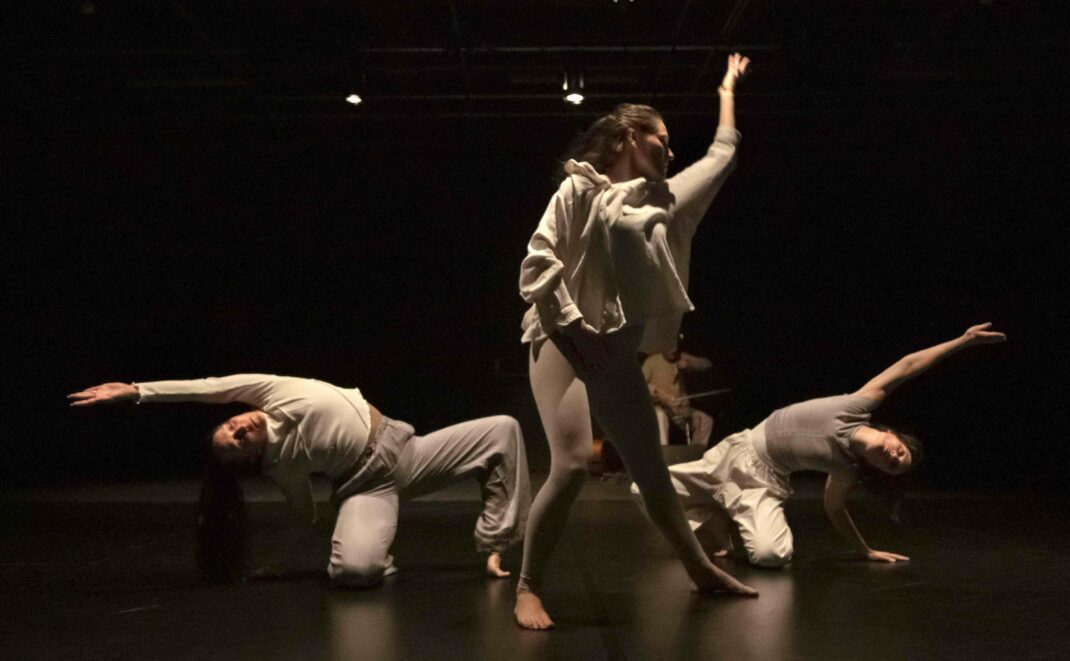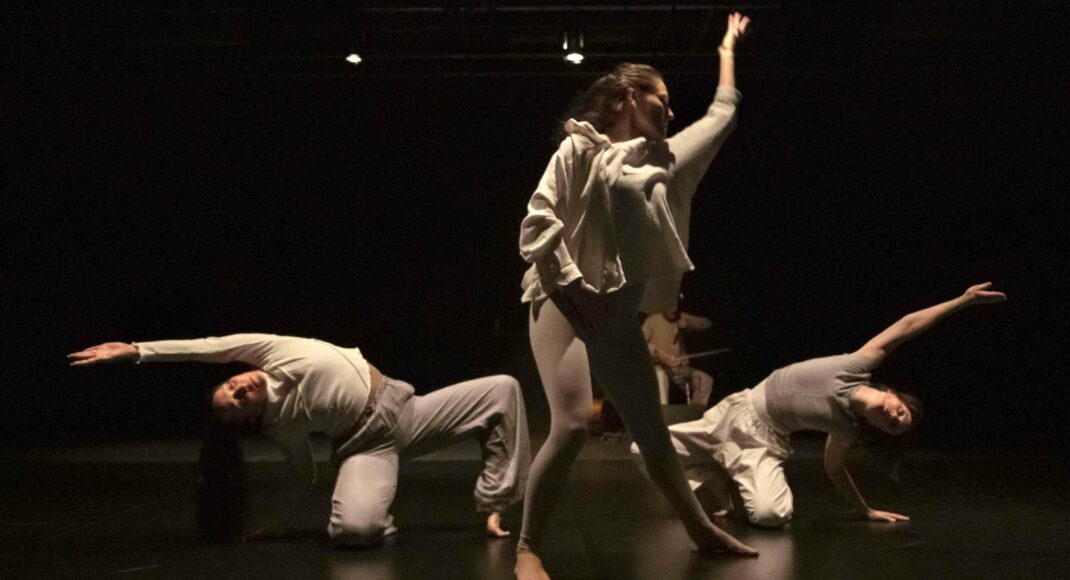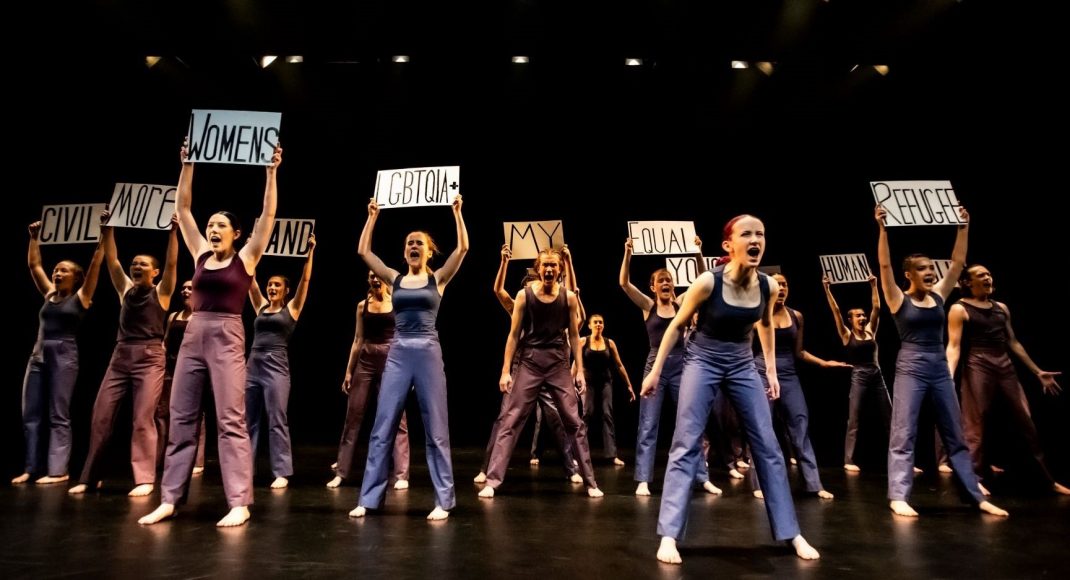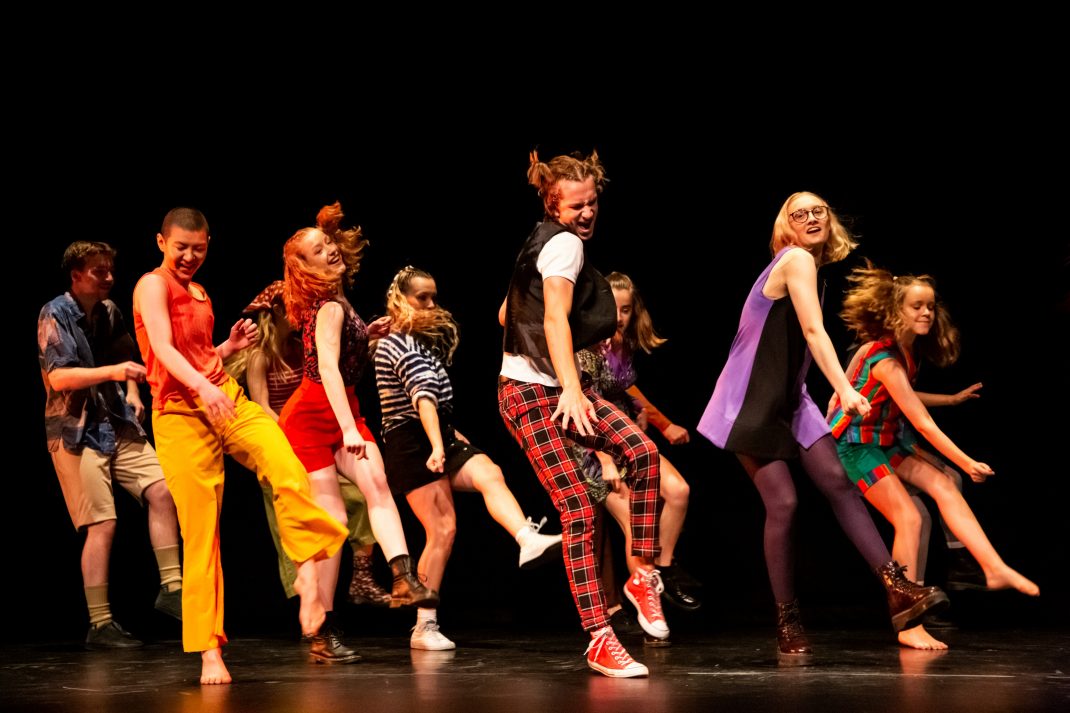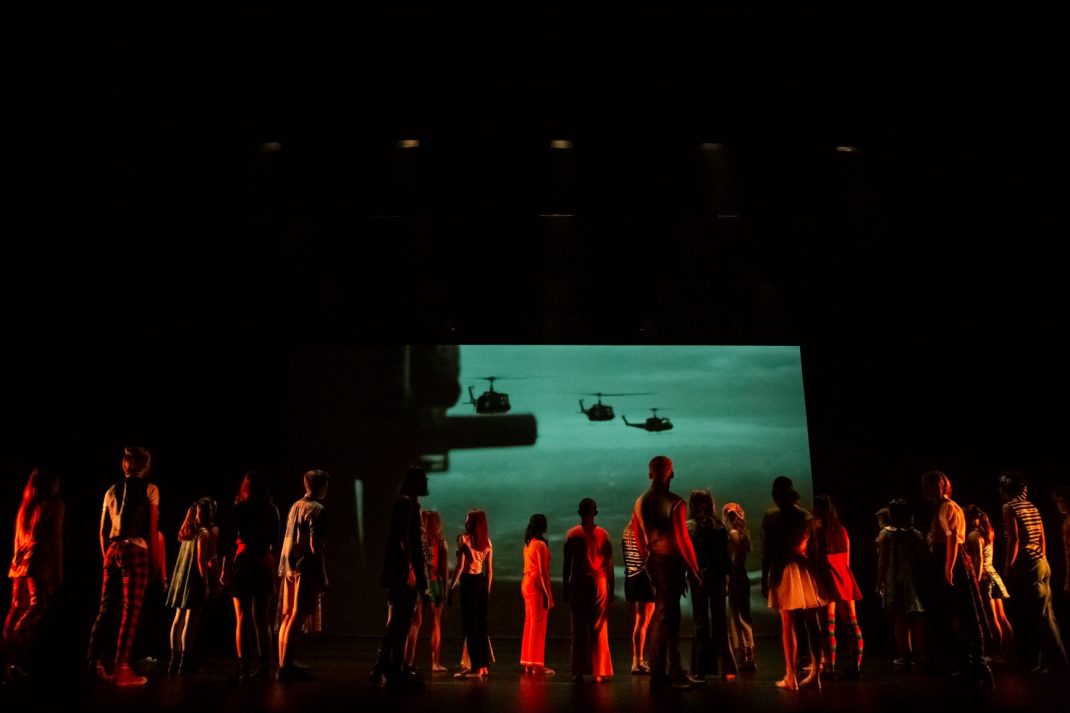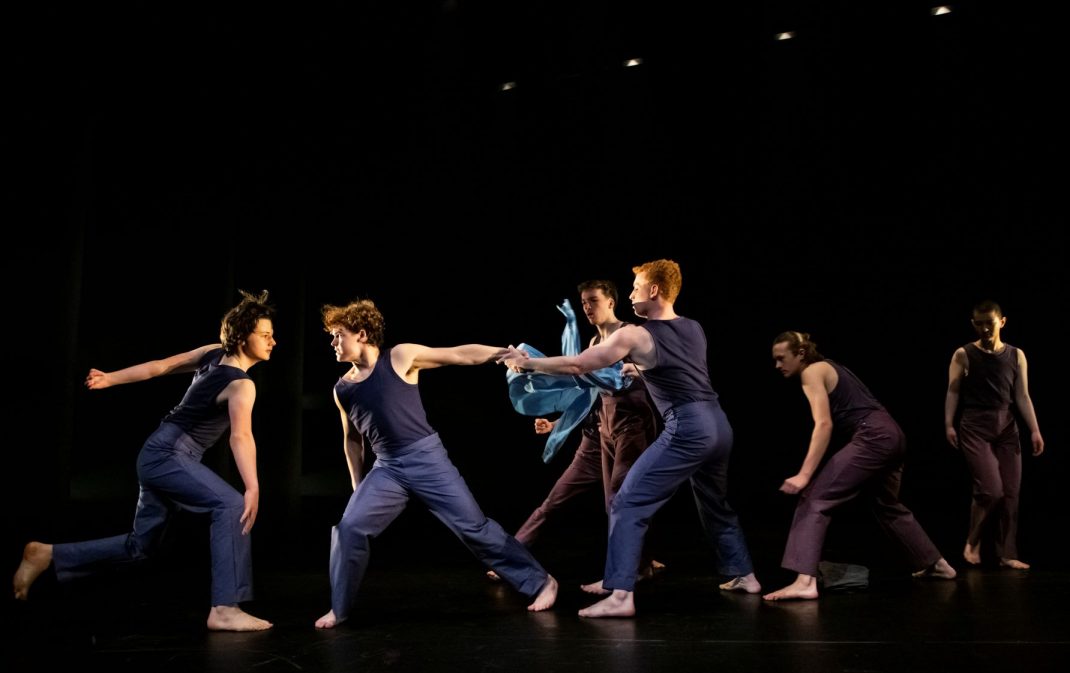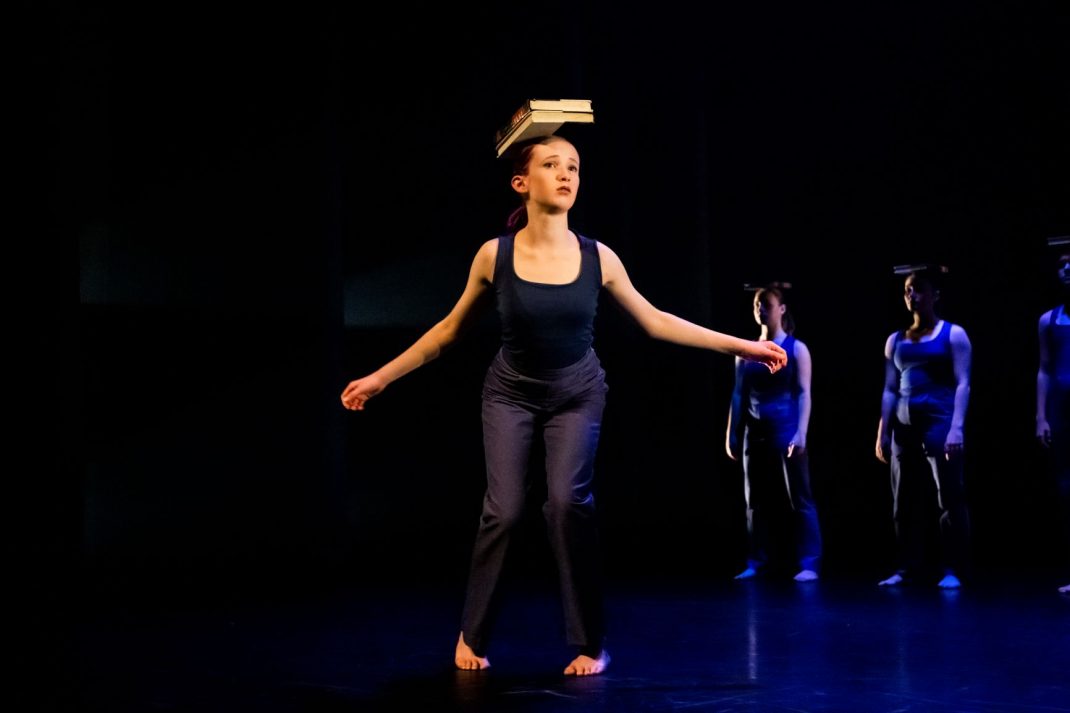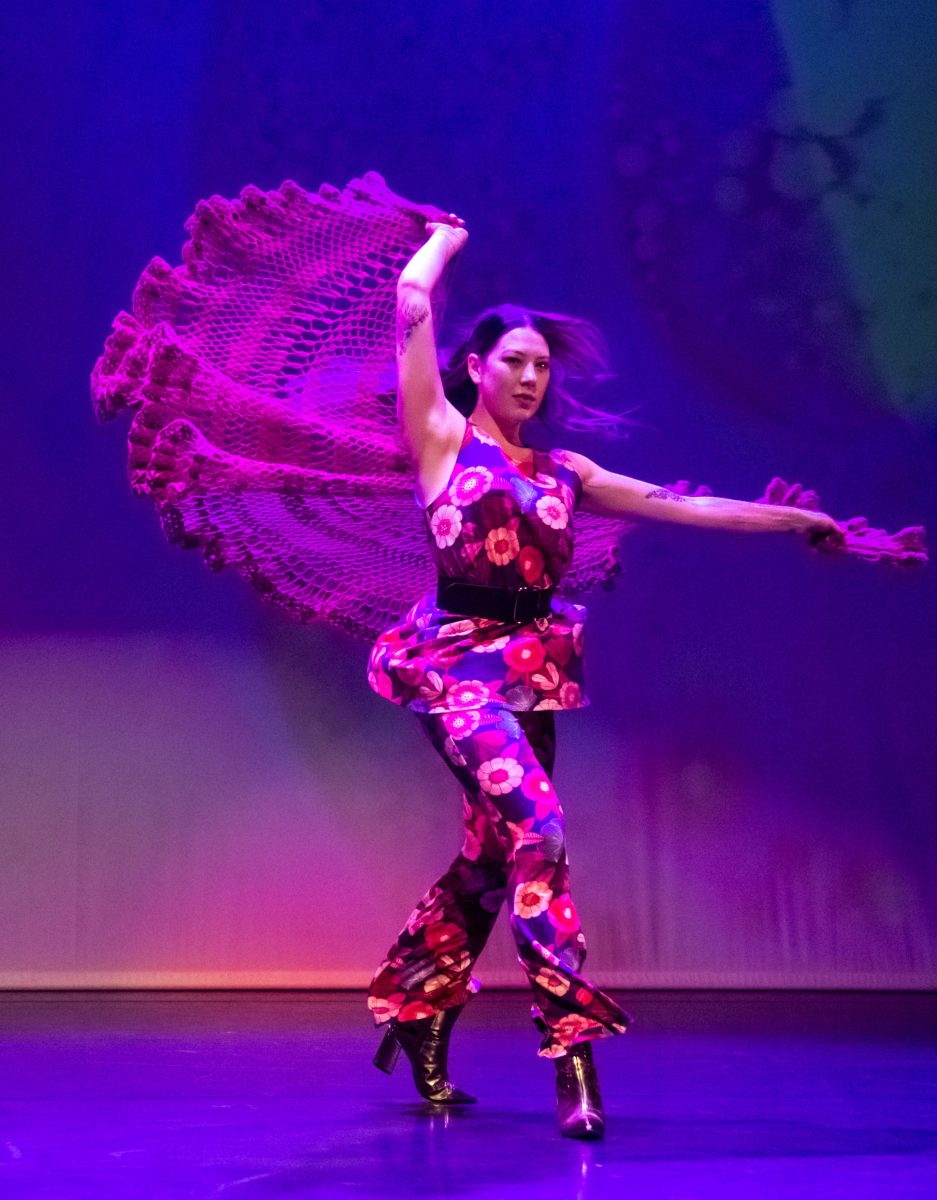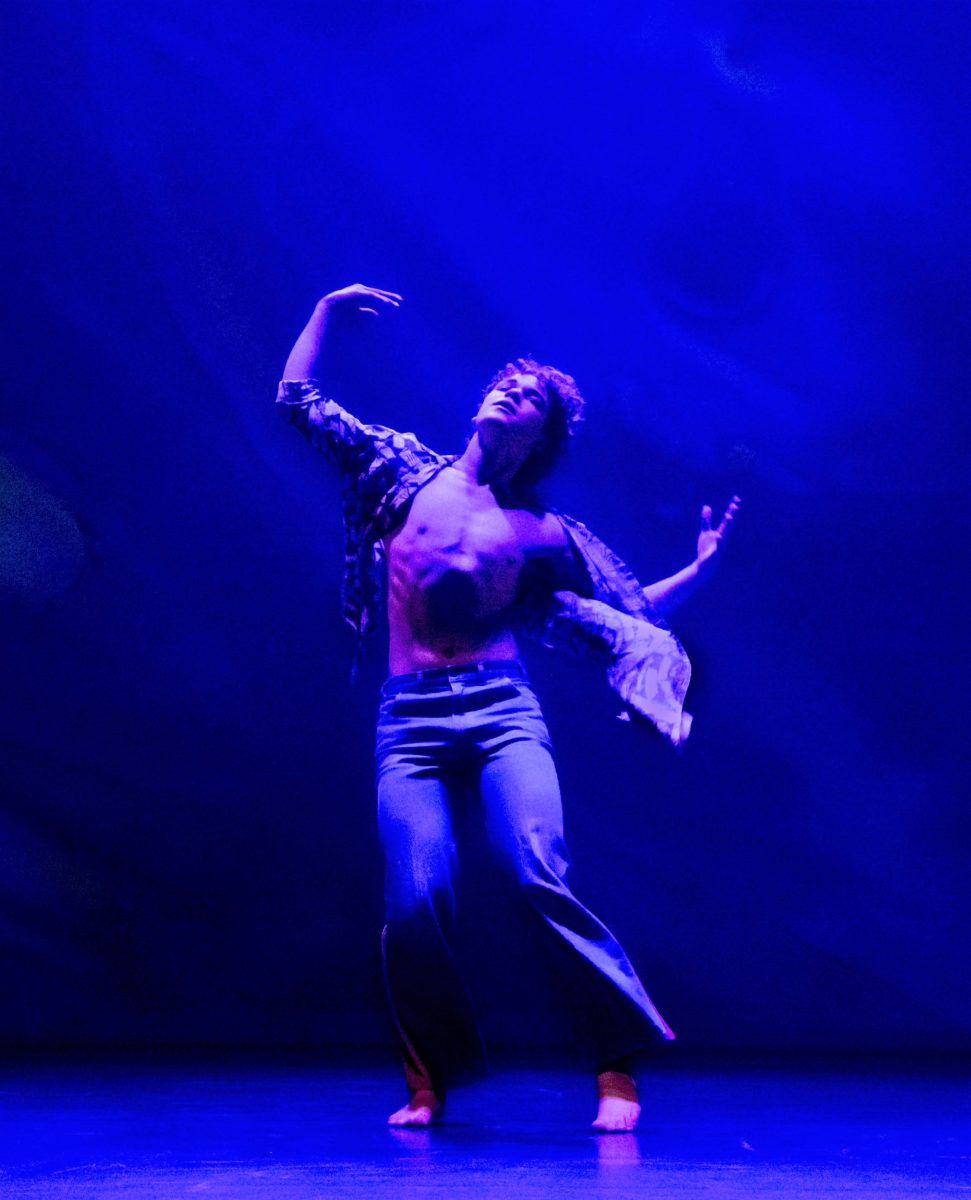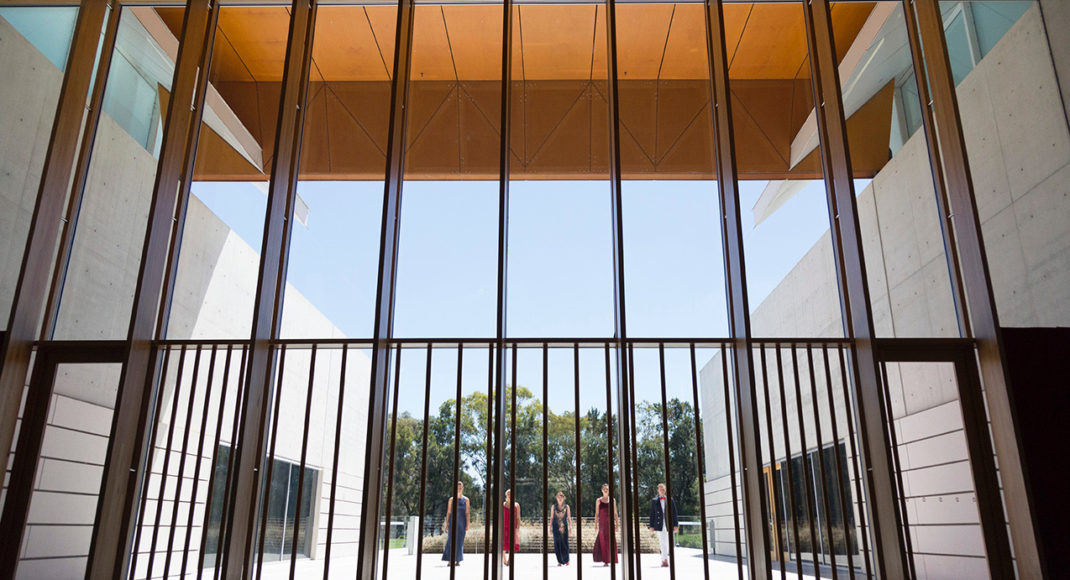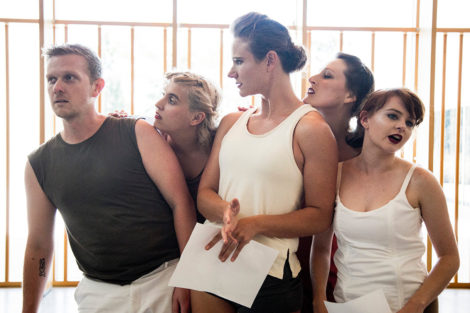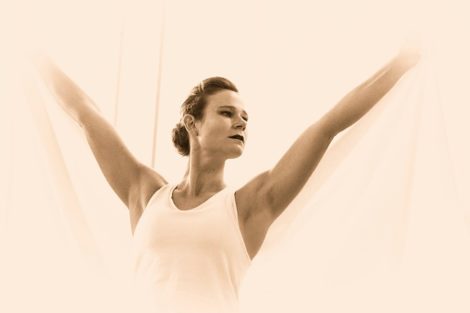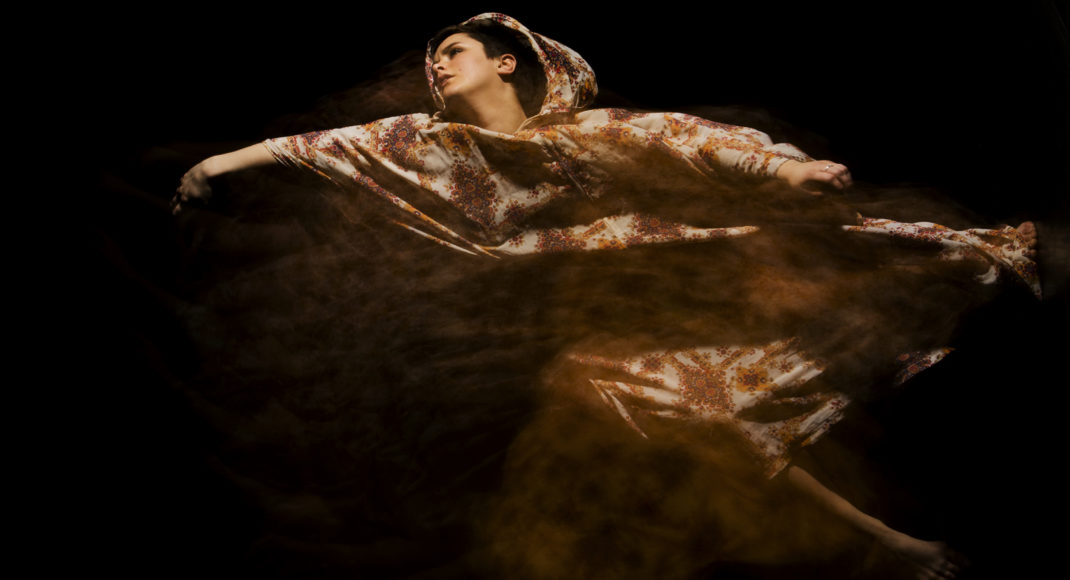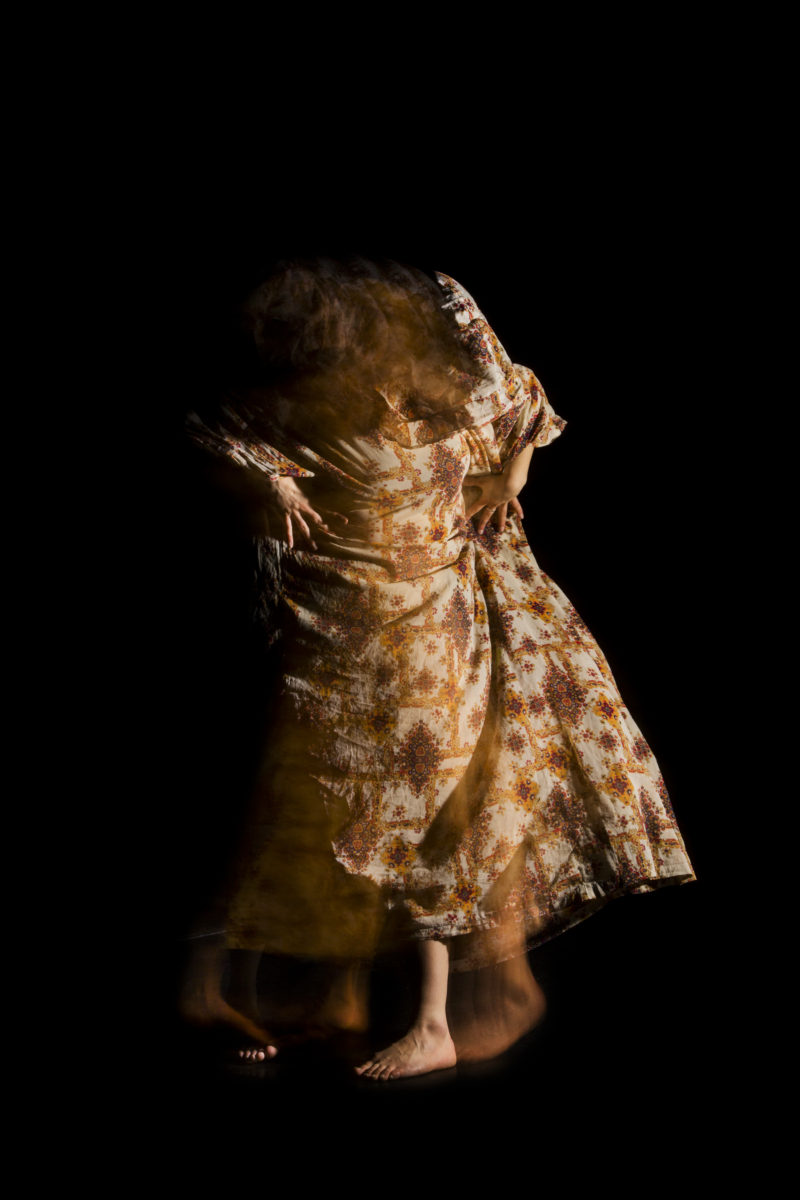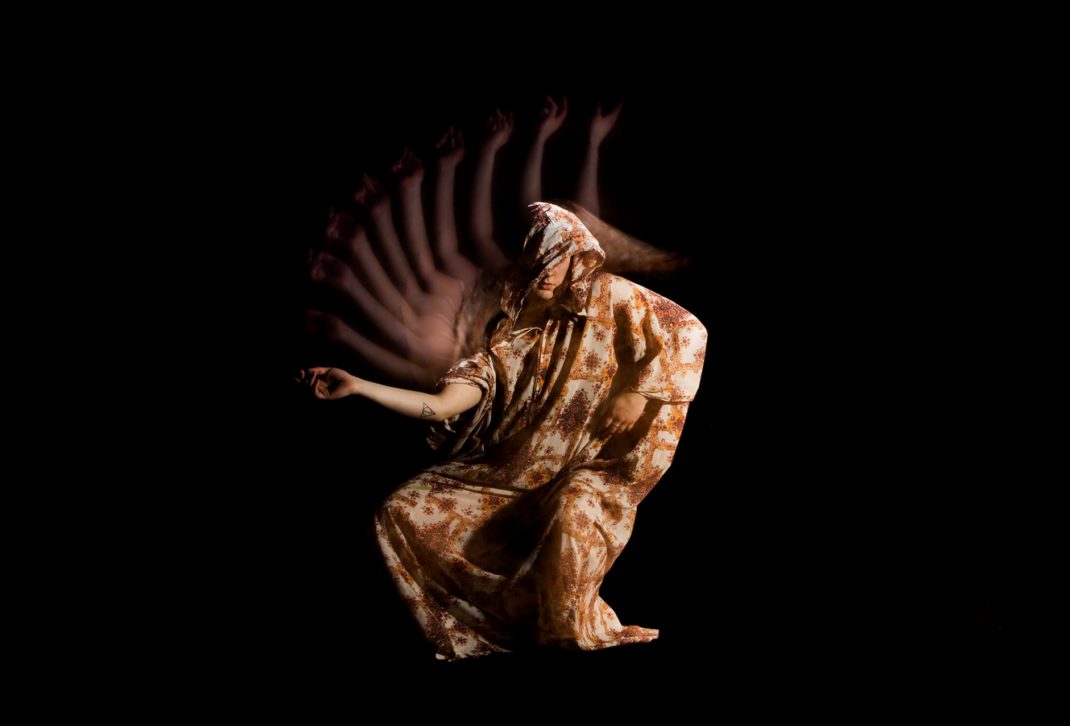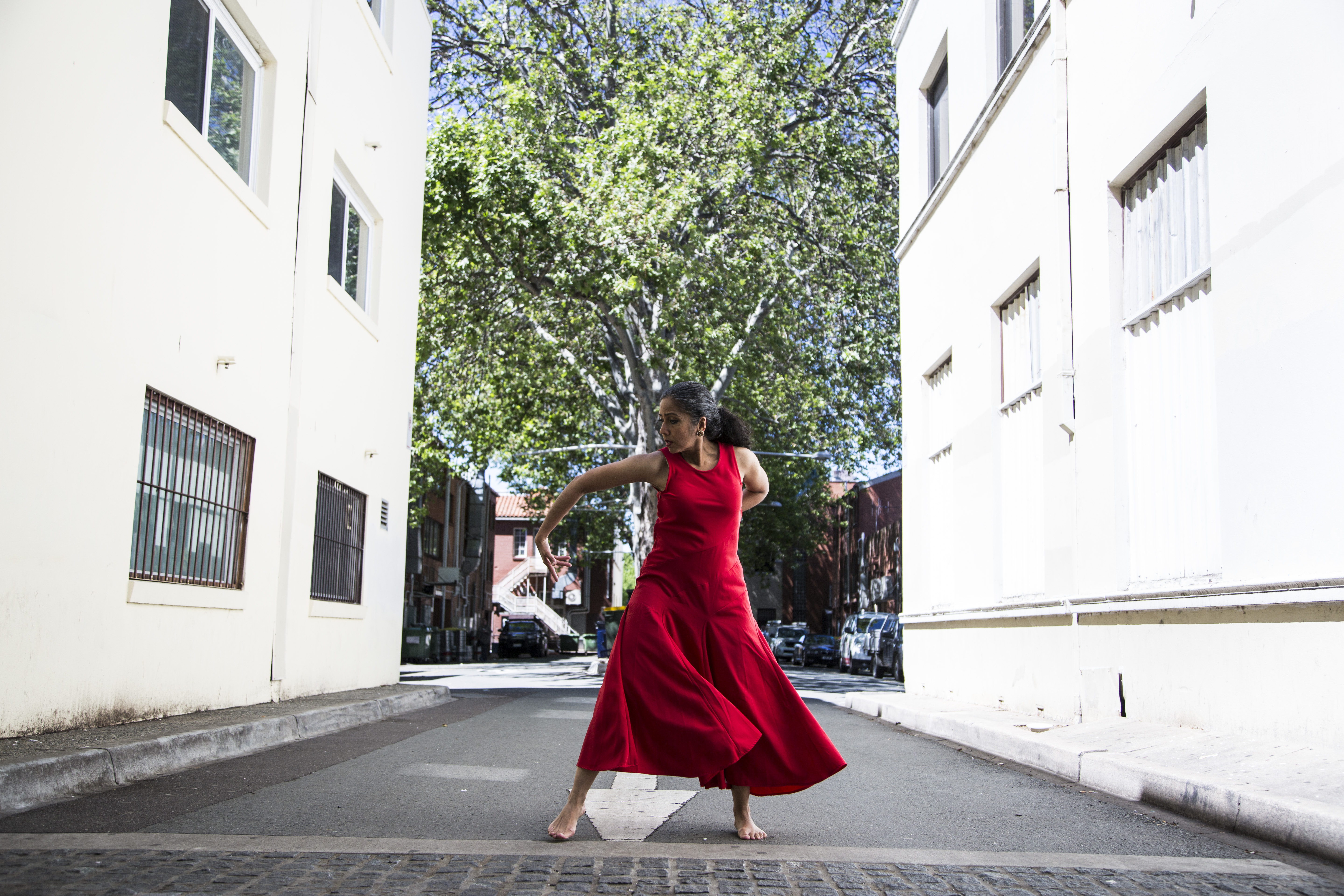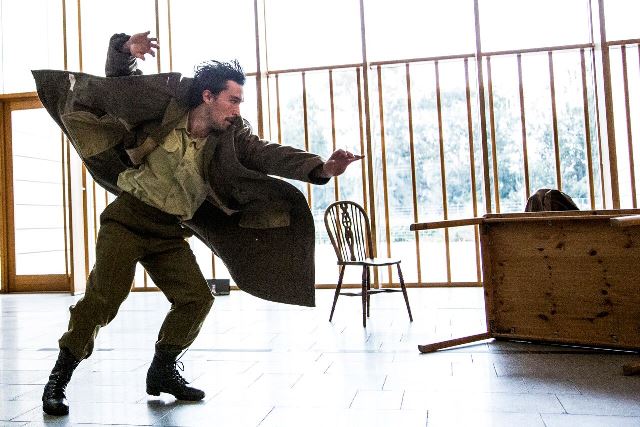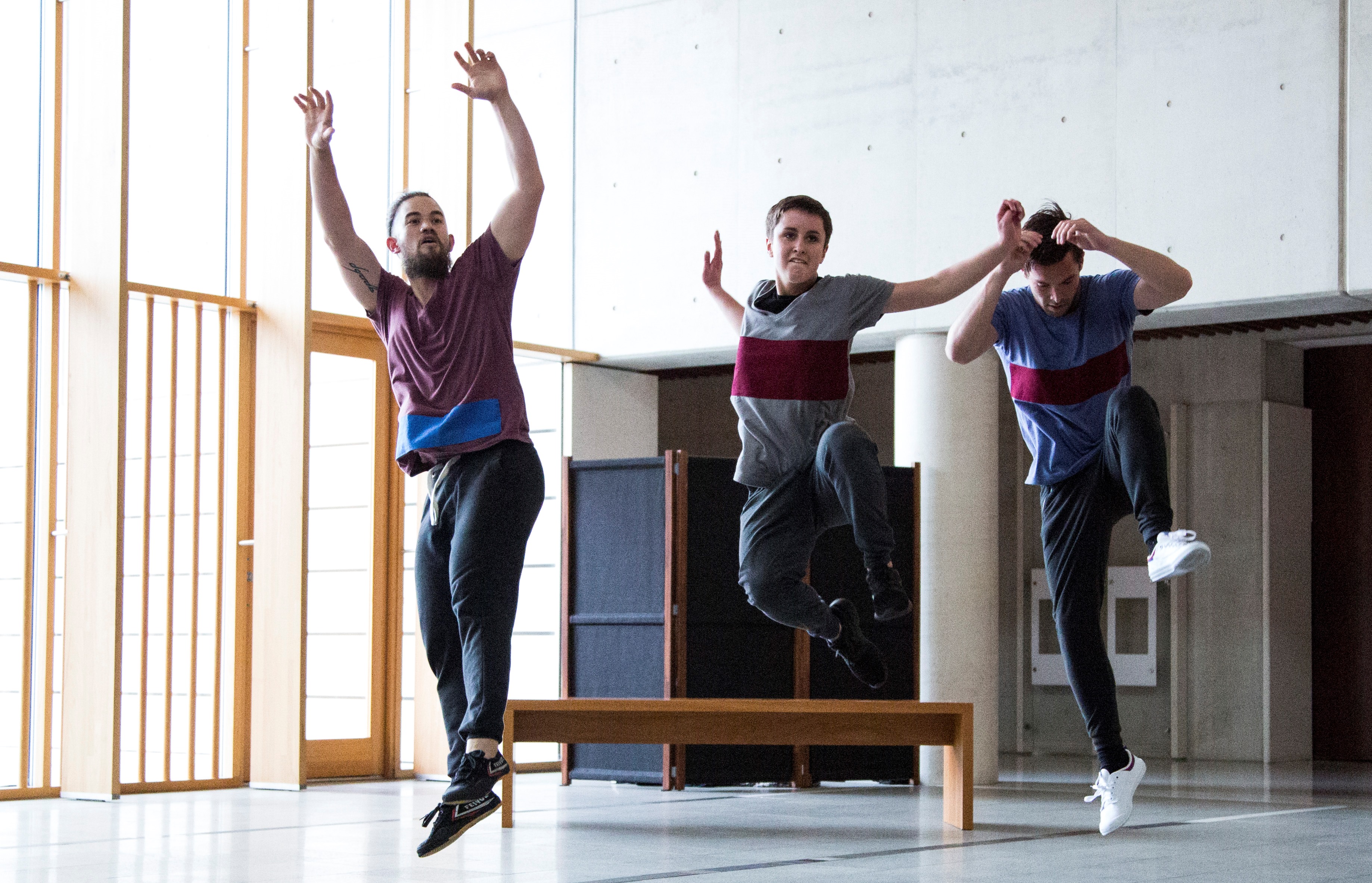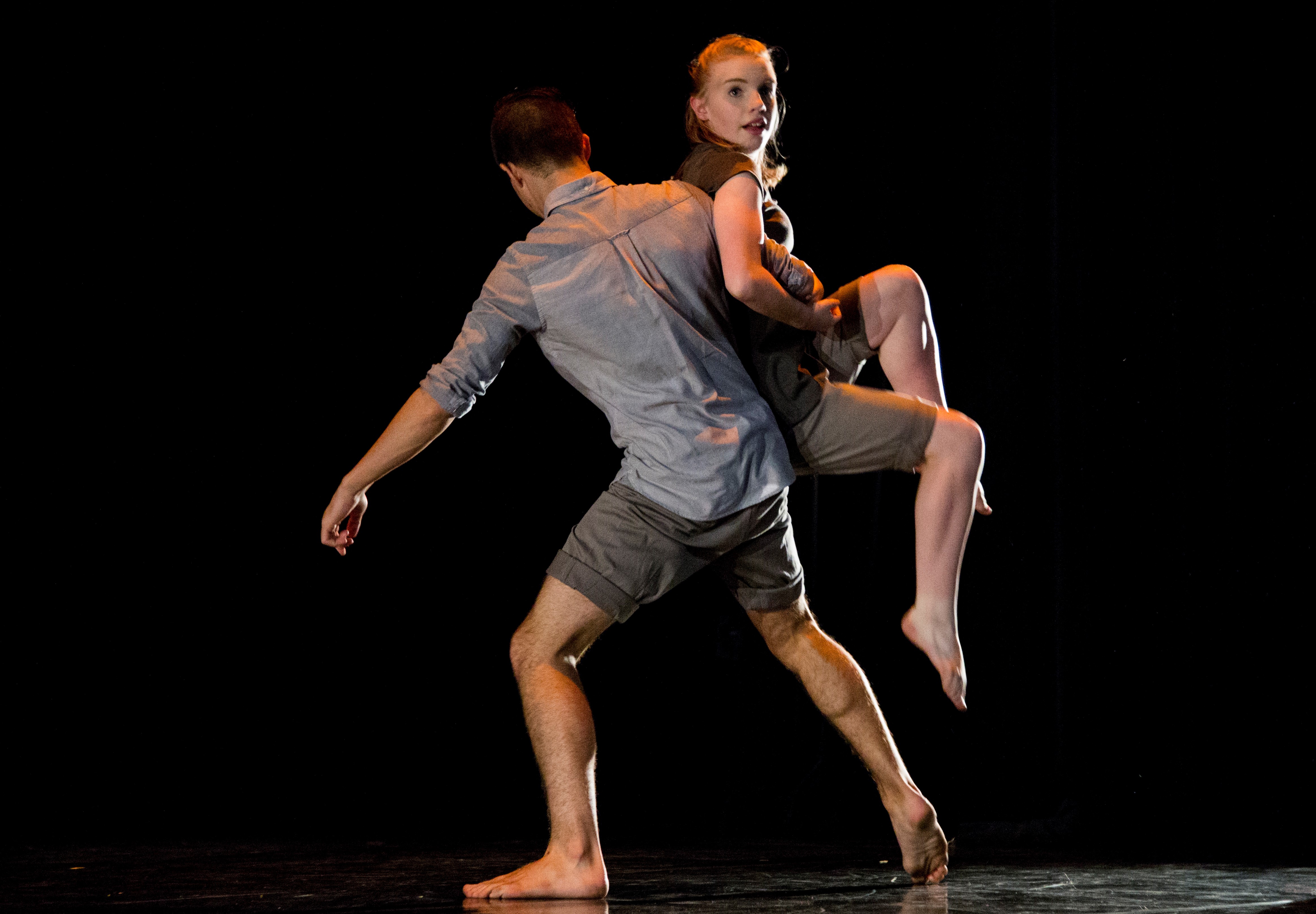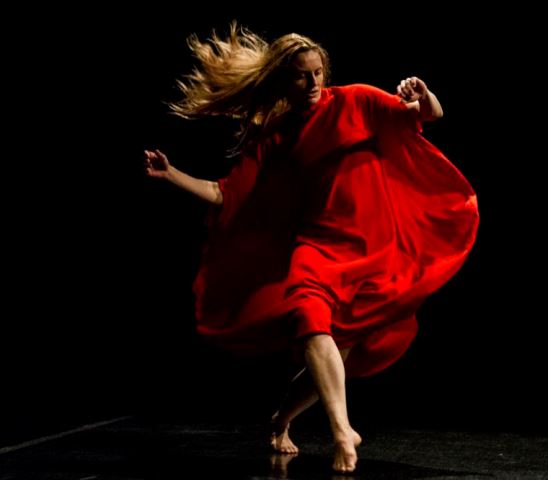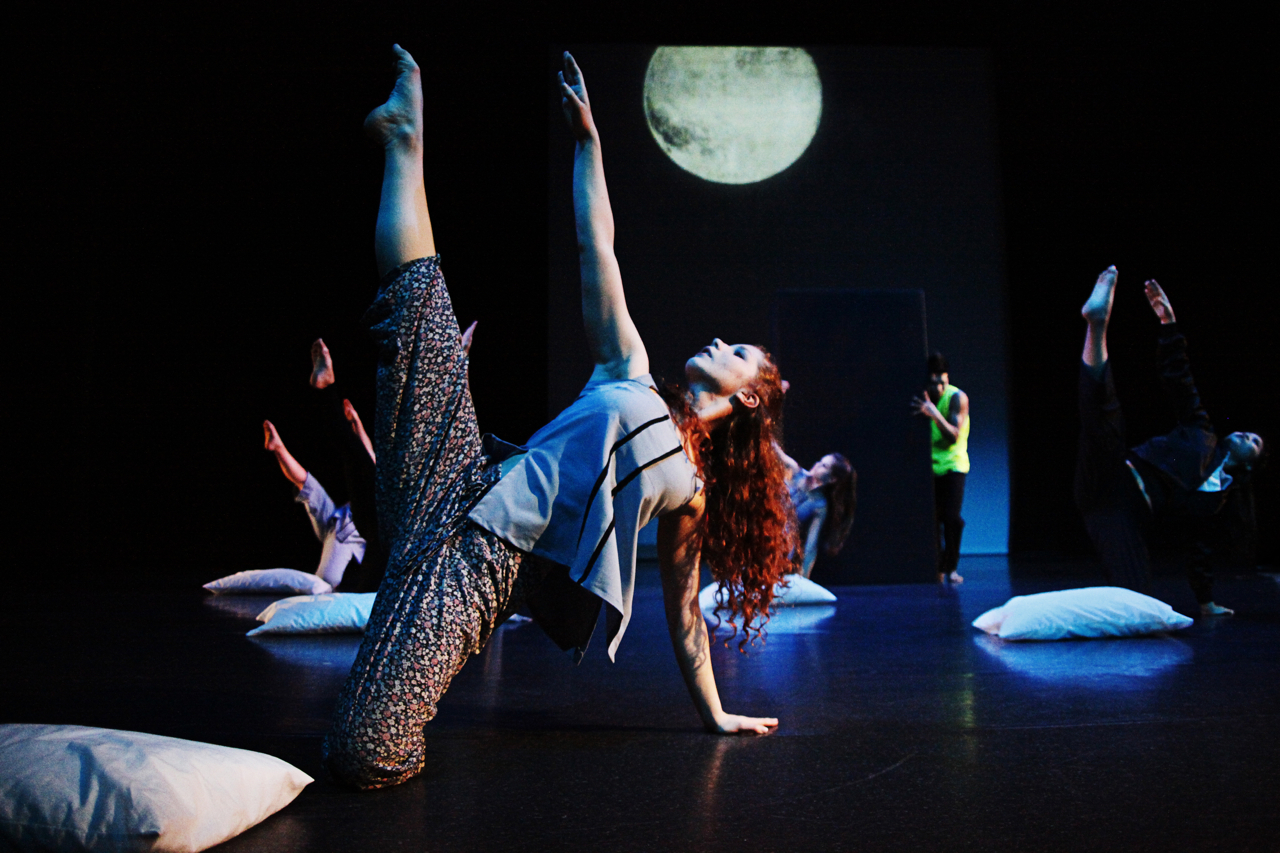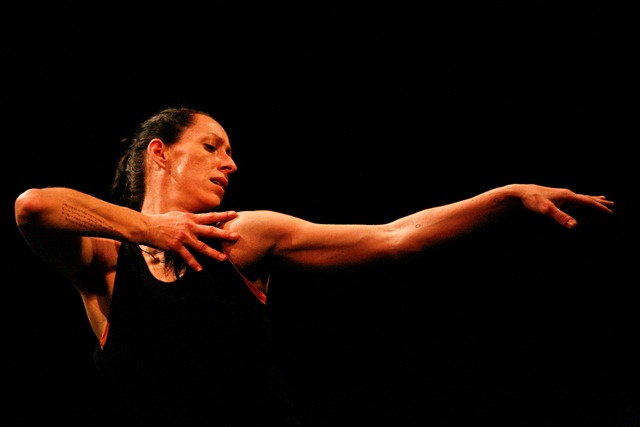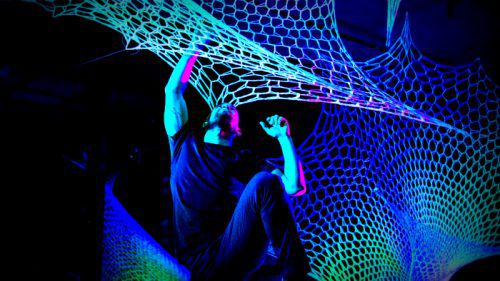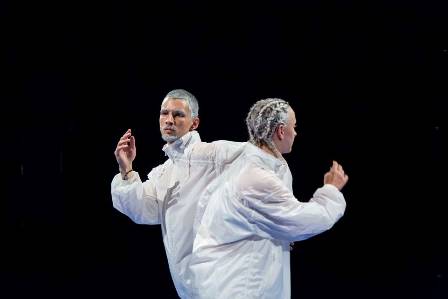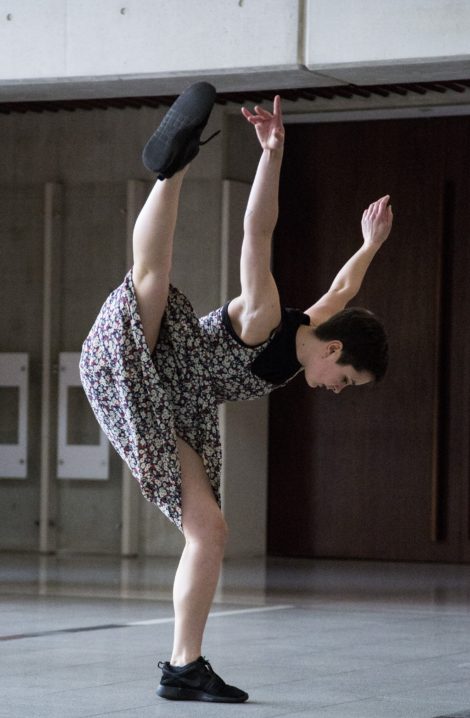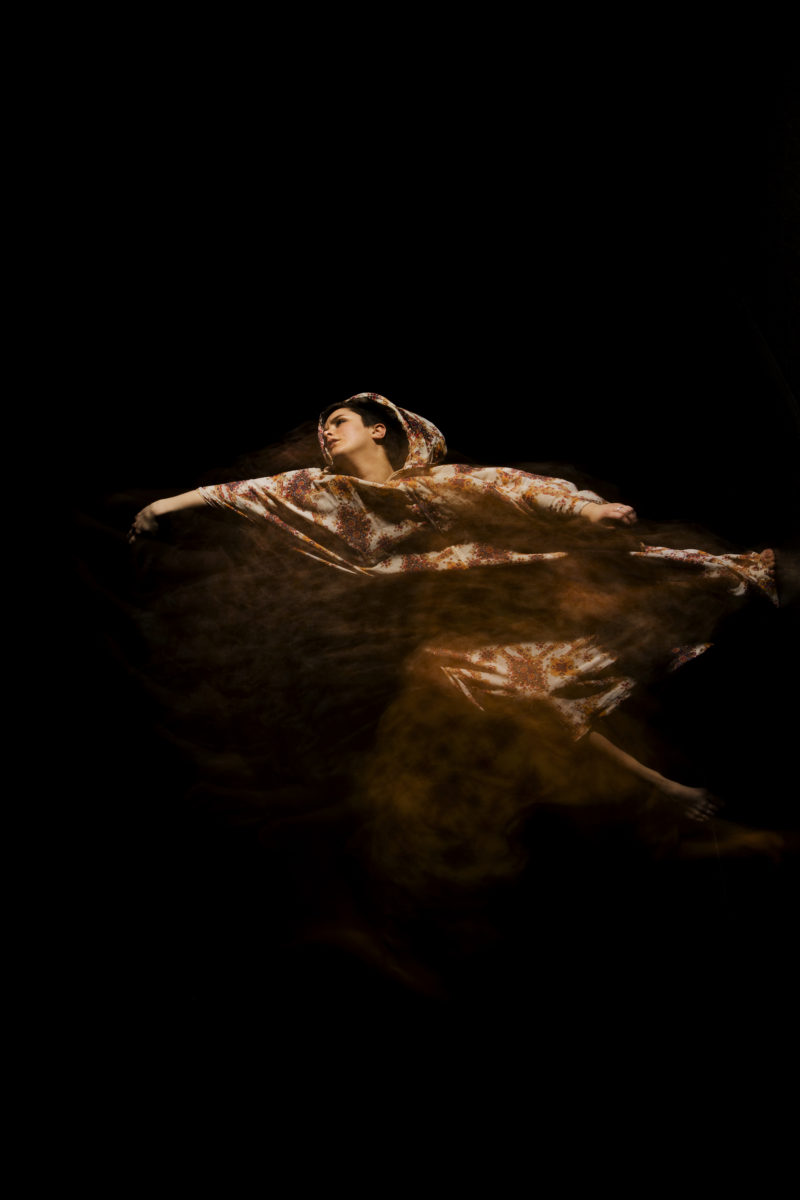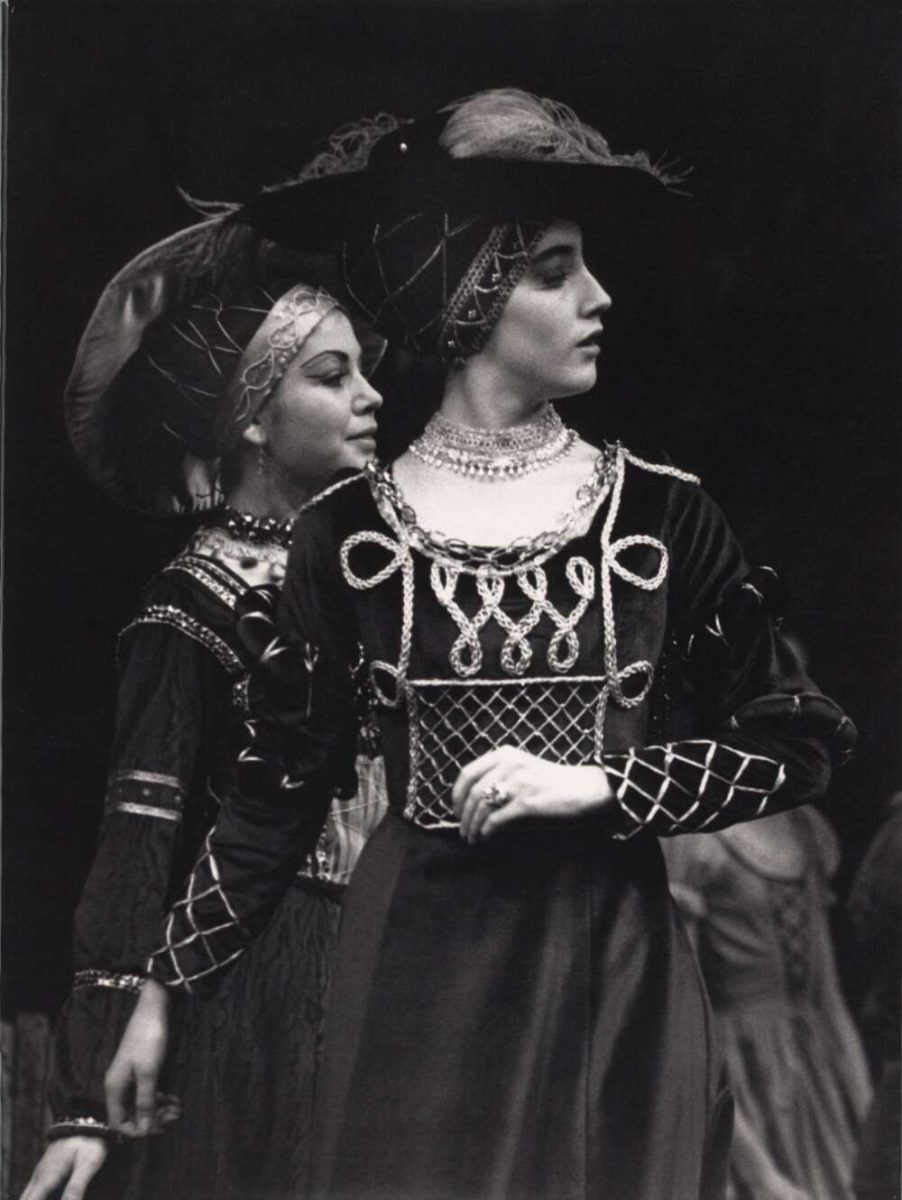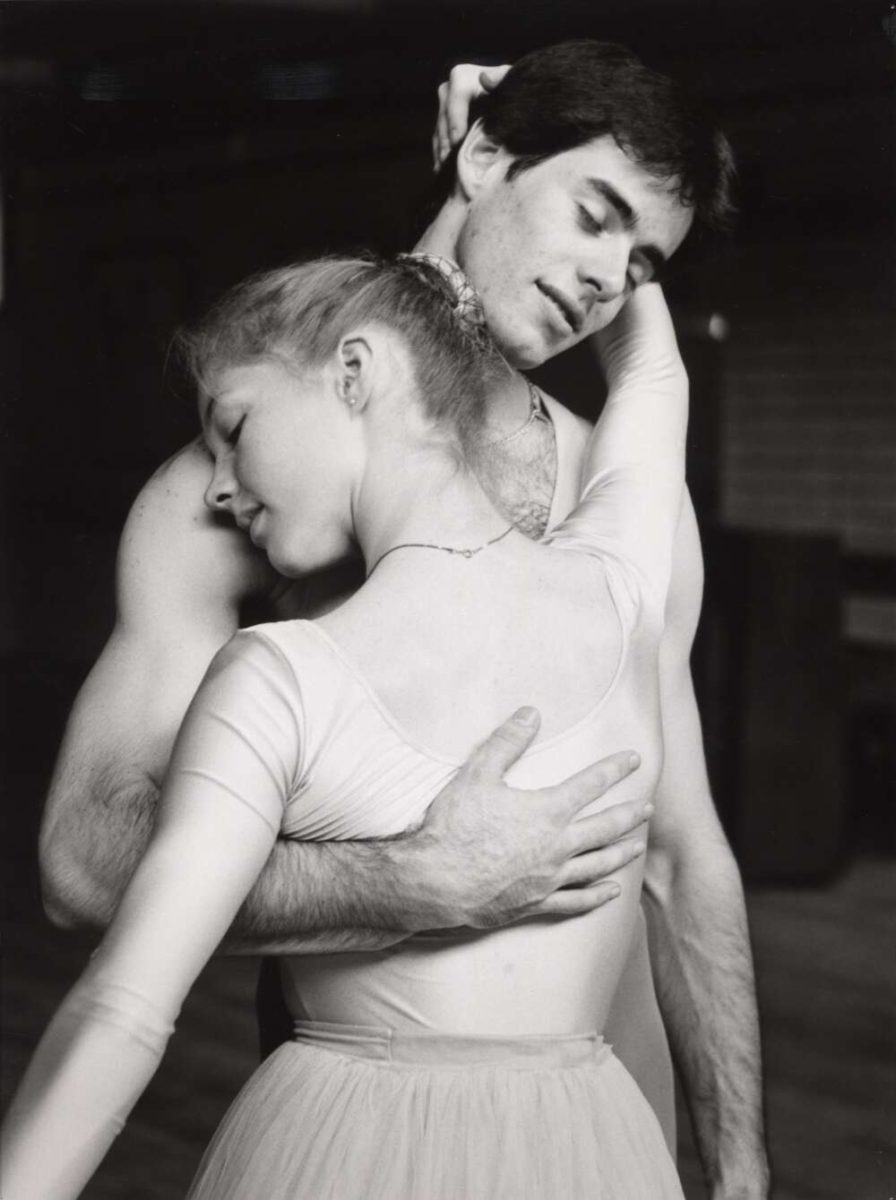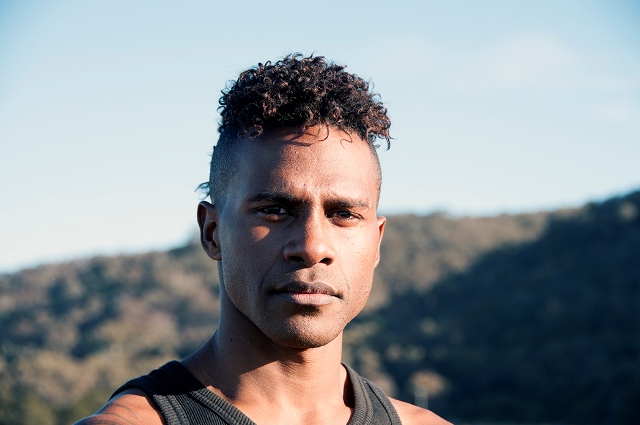29 April 2024. Courtyard Studio, Canberra Theatre Centre
Canberra Theatre Centre’s Courtyard Studio is always an interesting venue to visit. One never knows what might happen as far as performance goes, and not even how the venue will be set up. And so it was with the premiere of Co_Lab: 24 —the opening event for Ausdance ACT’s 2024 Australian Dance Week activities.
Co_Lab: 24 was an experimental collaboration using improvisation as a technique. It was performed by Alison Plevey and Sara Black from Australian Dance Party, guest dancer Melanie Lane, musicians Alex Voorhoeve and Sia Ahmad, and visual artist/lighting designer Nicci Haynes.
Entering the Courtyard Studio we were greeted with an instruction, ‘Please don’t walk on the black area.’ That black area was a large piece of tarkett spread across the floor space—the dance floor. A single row of chairs pressed against the four walls of the space was the seating for the audience, and at four points on the edges of the tarkett we noticed the two musicians with their instruments, the lighting/visual arts performer with a range of electronic items ready for use, and the photographer for the night, Lorna Sim.
There was no narrative and the show was certainly improvisatory with dancers and musicians always watching each other and moving or playing instruments in a collaborative manner. But there was an inherent plan within which the artists worked, made clear by those moments when a pattern of movement emerged. But there were also many other moments when absolute individuality predominated and the movement belonged specifically to particular dancers, and further moments when the dancers worked together without obvious patterning. All three dancers performed with admirable intensity using all parts of the body, even small parts such as fingers.
A lot of the movement was quite grounded (in true contemporary fashion). But there were also moments when a box became a prop that allowed the movement to reach upwards, and others when Nicci Haynes’ contribution of coloured imagery projected onto a rectangle of light in the centre of the tarkett allowed coloured patterns to appear over the bodies of the dancers.
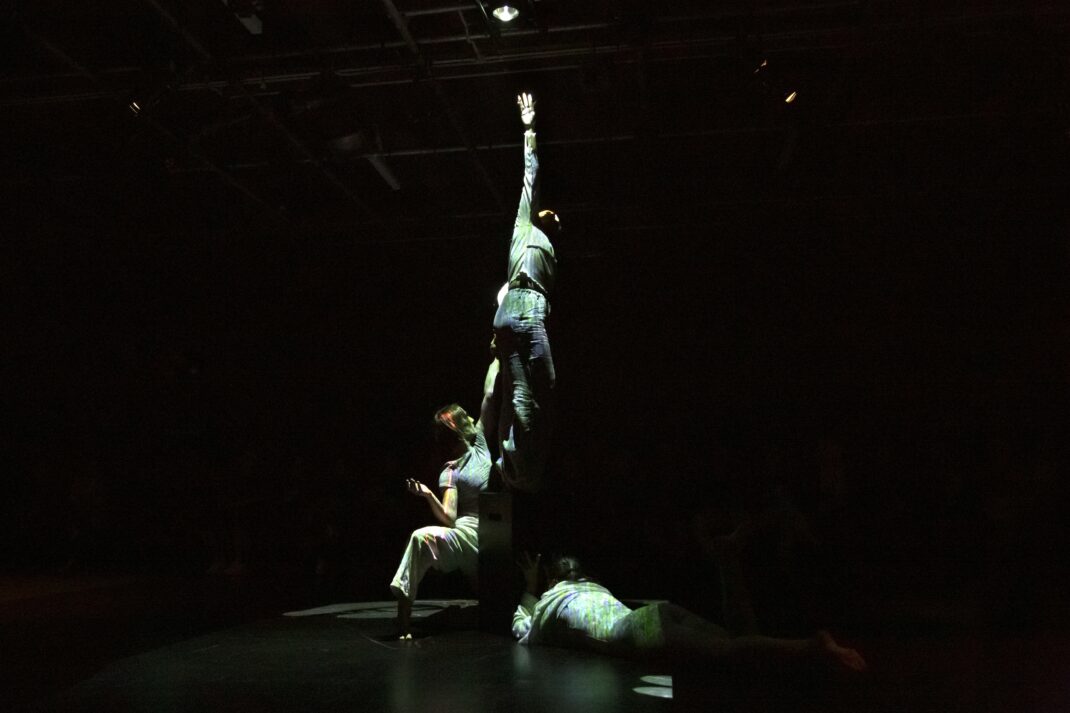
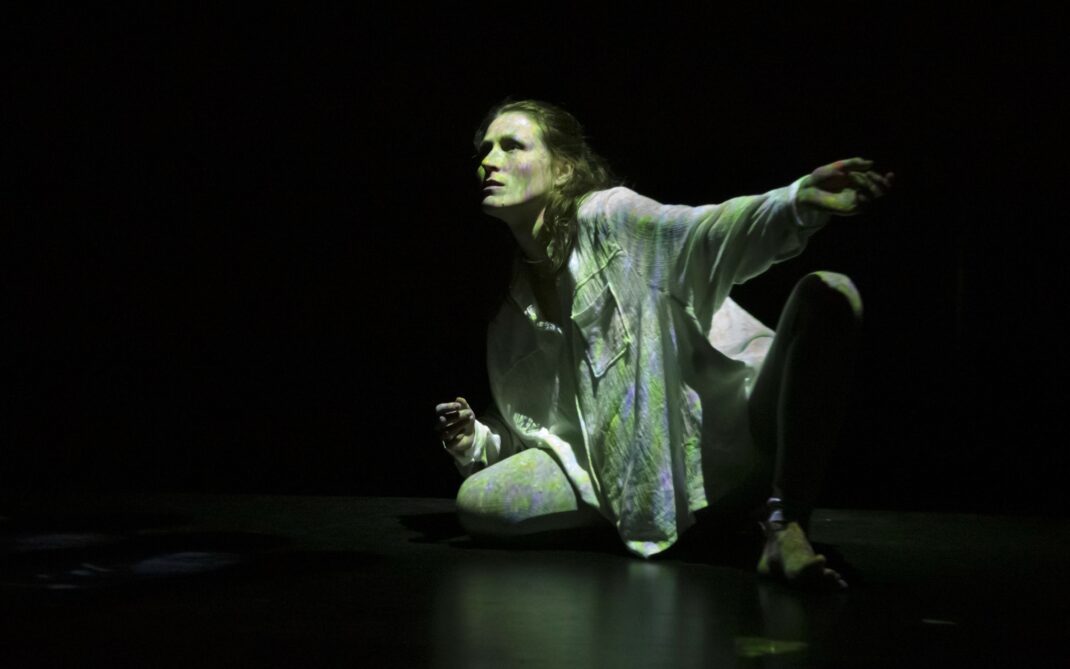
Part of the soundscape consisted of whispers, vocal noises, and other somewhat unrecognisable sounds from the equipment being used by Sia Ahmad. It was an unusual combination of sounds and, unfortunately, from where I was sitting it was difficult to follow what exactly was happening and how the sound was being created.
The absolute highlight for me was the finale when Voorhoeve stood up and moved into the centre of the tarkett space carrying his cello (his ‘regular’ one rather than the electric version that he had been playing for most of the performance). There he and Plevey performed a duet that was quite absorbing in the clear and strong interaction that existed between them. As the work came to a close Plevey left the spotlight leaving Voorhoeve alone. He played solo for a short time and then finished the evening by collapsing his body forward over the cello. The show was over.
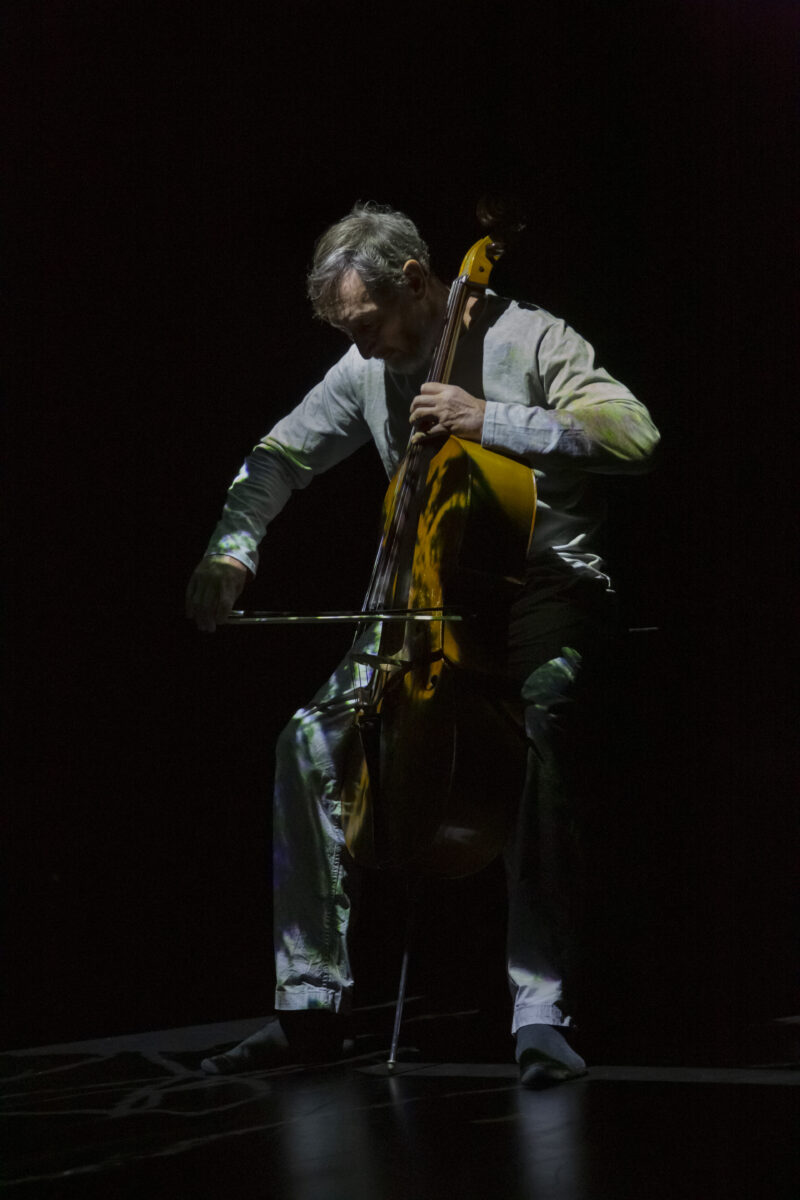
Michelle Potter, 1 May 2024
Featured image: (l–r) Melanie Lane, Alison Plevey and Sara Black (with Alex Voorhoeve a small figure in the background) in Co_Lab: 24. Australian Dance Party and collaborators. Photo: © Lorna Sim, 2024
